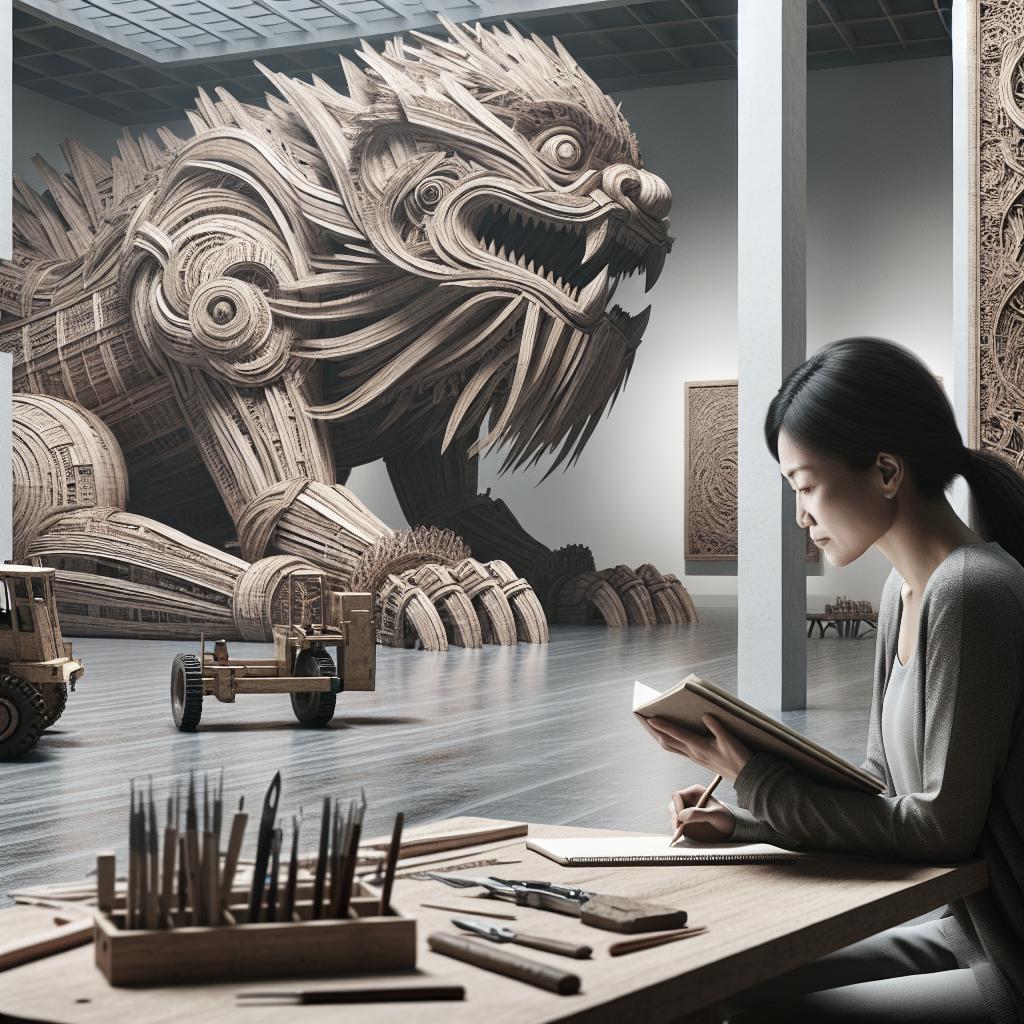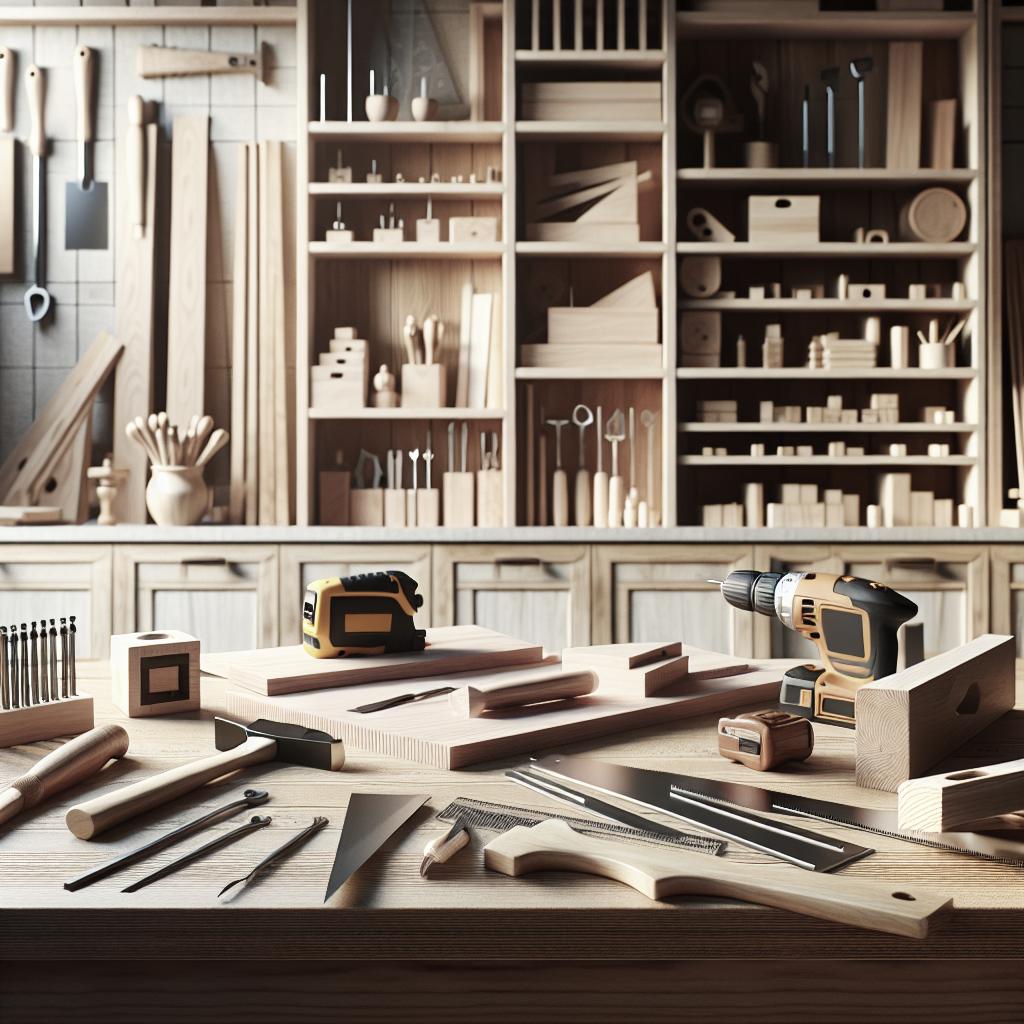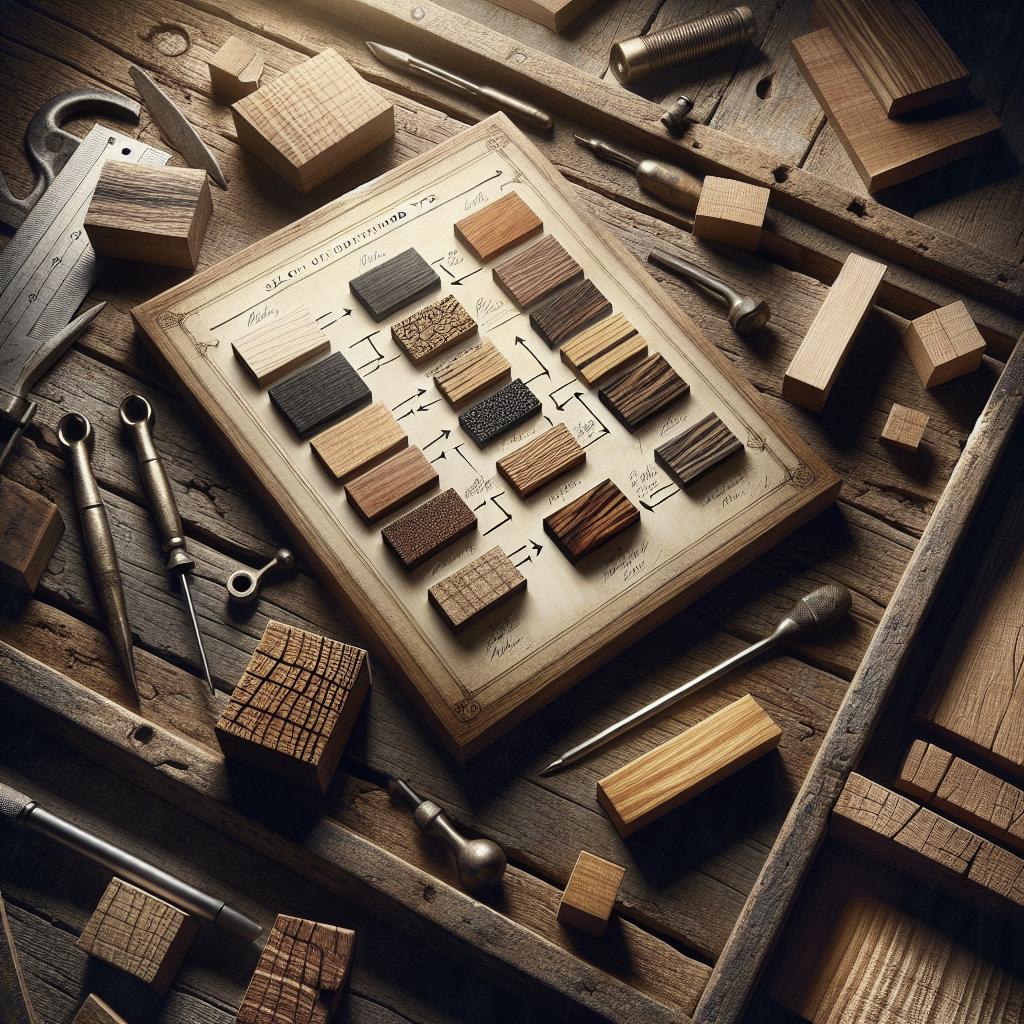“`html
Approaching Large-Scale Wood Art Installations
Introductory Plan
Large-scale wood art installations offer a striking blend of aesthetics and architectural integration, providing public spaces with character and creativity. Whether you’re a municipality, organization, or private entity considering a public artwork project, it’s crucial to understand the multifaceted process involved. From initial planning to execution, this guide will walk you through essential steps, such insights on commissioning art, the importance of site suitability, and the intricacies of choosing materials. We’ll delve into sustainable practices, unconventional locations, and harnessing technology’s role in modern installations. Building the right team, understanding cost implications, and effectively working with artists, both emerging and established, are key. Alongside these strategies, this guide will cover the legal and administrative aspects essential to successful projects.
Summary
In this comprehensive guide, we aim to provide potential commissioners of large-scale wood art installations with a robust framework to tackle projects confidently. You will learn about the preliminary considerations and critical factors influencing the commissioning of public artwork. We discuss various material choices alongside sustainability practices to ensure that your installations not only captivate but also endure and respect environmental standards.
Moreover, we engage with selecting the right team of artists, consultants, and other key stakeholders necessary to bring artistic visions to life. The guide will further elaborate on budgeting, health, and safety norms, as well as contracts essential for smooth project execution.
Before You Start
Before embarking on the journey of commissioning a large-scale wood art installation, it is crucial to have a clear understanding of why it’s needed and what you aim to achieve. Your objectives will guide the entire process, influencing decisions from the choice of artist to site selection.
Another aspect to consider is the community engagement and potential impact of the artwork. Public art often serves as a cultural touchstone, so understanding the demographics, values, and sensibilities of the area will help in creating a piece that resonates with its audience. This foundational research will help set the tone for further steps.
Commissioning a Public Artwork
Commissioning public art is an intricate process requiring ample research, strategy, and collaboration. Engage with art consultants early to ensure that your vision aligns with your objectives. Consultants can guide you through the nuances of artists’ styles, the feasibility of their proposed concepts, and their past works.
Remember to consider the longevity and maintenance requirements of the installation, factoring these into your decision-making. Some artworks may need regular upkeep, so think ahead about long-term plans for maintenance to preserve the integrity of the piece.
Know what makes a public piece of art officially ‘public’
Understanding what classifies an installation as a public piece of art is key to the commissioning process. Public art is typically accessible to all, devoid of barriers, and often integrated into spaces shared by the community, such as parks, streets, or civic buildings.
Legal and administrative recognition as a public artwork may involve navigating through permits, compliance with local laws, and adhering to community guidelines. Ensuring these aspects are thoroughly dealt with will prevent potential legal challenges later on.
Know where is suitable to commission a public artwork
Location is paramount in realizing a successful art installation. Ideally, the chosen site should harmonize with the artwork’s theme, ethos, and aesthetic. High-traffic areas like public squares, pedestrian pathways, or areas of cultural significance are often preferred.
It’s also significant to assess the physical characteristics of a proposed site such as lighting, visibility, accessibility, and environmental conditions. These will impact the selection of materials and the design of the installation.
Suitable Materials
Metals
Metals such as steel, aluminum, and bronze are frequently used in public art installations due to their durability and versatility. These materials can withstand environmental wear and tear, making them ideal for outdoors.
Metal offers a contemporary look and can be manipulated artistically to achieve intricate designs and textures that stand the test of time.
Stone
Stone is another classic choice known for its sturdiness and natural beauty. Often utilized for its historical associations, stone provides a timeless quality to artworks, offering prestige and permanence.
While it requires careful handling and expert craftsmanship, stone remains a favored material, especially in settings looking to evoke tradition and nostalgia.
Sustainable
Sustainability in art installations is not only a growing trend but a necessary commitment to environmental stewardship. Using renewable resources, eco-friendly materials, or recycled elements offers a means to embed sustainability directly into the heart of the artwork.
Additionally, collaborative projects with local communities or educational workshops can extend the lifecycle of the installation, nurturing an ongoing dialogue around environmental awareness and responsibility.
Unusual locations
Architecture
Integrating art into architectural spaces can create transformative experiences for viewers. The blending of artwork with buildings, bridges, or other structures presents art as an integral component of the landscape rather than an isolated element.
Such integrations can dramatically alter the perception of everyday spaces, adding layers of meaning and encouraging deeper public interaction.
Mural
Murals on atypical surfaces, such as the exteriors of buildings, unexpected walls, or ceilings, offer an engaging and open canvas for artists. These locations encourage people to look beyond traditional viewing spaces, fostering a sense of curiosity and discovery.
Art in these areas invites dynamic interactions and can significantly impact the social and cultural fabric of a community.
Temporary
Temporary installations are increasingly popular for their ability to introduce new art forms, experiment with concepts, and engage with audiences in novel ways without a long-term commitment. Temporary pieces can also serve to test site appropriateness or community response before investing in a permanent piece.
Events, festivals, and special occasions are excellent opportunities to showcase temporary installations, often drawing larger crowds and media interest.
Technology
Incorporating technology into art installations broadens the horizon of possibilities. From interactive elements like motion sensors and augmented reality to digital projections and lighting systems, technology adds layers of interactivity that traditional art often lacks.
It provides artists and viewers with new ways to engage with art, offering memorable and boundary-pushing experiences.
The Team
Forming a skilled team is pivotal to the success of an art installation. This typically includes project managers, engineers, artists, technicians, and art consultants who contribute their expertise at various stages of the process.
Effective teamwork relies on clear communication, shared objectives, and coordinated efforts to turn artistic concepts into tangible realities, ensuring that each component of the project aligns perfectly.
The Artist
Choosing the right artist for a large-scale wood art installation entails careful consideration of their current body of work, vision, and ability to work within set parameters and constraints. The artist’s compatibility with the proposed site and community values is vital.
Maintain an open dialogue with the artist as their creative insights will often enrich the installation’s conceptual and practical aspects.
The Art Consultant / Curator / Advisor / Commissioning Agency
These professionals are key players in the commissioning process. They bring a wealth of knowledge in art curation, historical context, and artist selection that will guide the project’s success. Rely on their expertise to navigate complex decision-making and interpersonal dynamics.
Their role spans identifying suitable artists, managing negotiations, collaborating with public agencies, and advising on possible funding avenues.
The Selection Team
The selection team—often comprising representatives from local government, art councils, and community members—plays an essential role in maintaining transparency and inclusivity in deciding final artwork pieces.
Involving a variety of voices ensures diverse perspectives that contribute to more balanced and community-tailored art installations.
(Optional) The Public
Incorporating public opinion can be beneficial, giving communities a sense of ownership and pride over public art installations. Engaging with the public can take many forms, from surveys and participatory events to public forums.
It’s crucial to gauge community response, as public buy-in will significantly impact the acceptance and longevity of any public artwork.
The Admin
Administrative tasks can’t be underestimated in the planning and execution of public artworks. Thorough documentation, permitting processes, and coordination with local authorities form the backbone of any successful project.
The admin team will handle budgets, negotiate contracts, and facilitate open lines of communication between various stakeholders to keep the project on track.
Costs
Estimating project costs involves considering factors such as materials, labor, artist fees, permits, and potential unexpected expenses. It’s critical to prepare for contingencies to avoid compromising quality due to budget overruns.
Presentation of a clear financial plan to stakeholders will demonstrate foresight and secure the necessary backing for the project.
‘Artist Brief’
An artist brief is an essential document outlining the project’s goals, expectations, location specifics, and budgetary constraints. A comprehensive brief will allow artists to propose designs aligned with your vision, ensuring clarity and mutual understanding.
Ensure the brief remains open-ended enough to allow for creativity, but with enough guidance to keep the project focused and on track.
Budget
Budget planning involves a thorough assessment of all potential costs and financial resources. Prioritize long-term value over short-term savings, opting for quality materials and artisanship.
Securing additional funding through grants, sponsorships, or public funding can help expand budget capabilities, allowing for more ambitious projects.
Health & Safety
Health and safety are critical to the planning and execution of large-scale art installations. Ensure all installations comply with legal safety standards and consider potential risks at every stage, from installation to public interaction.
In collaboration with engineers and safety experts, conduct thorough safety audits and prepare for contingencies to safeguard all participants and the public.
Contract
Contracts establish clear terms and conditions for all parties involved in the artwork project. They should address payment structures, timelines, deliverables, and dispute resolution mechanisms.
A well-structured contract minimizes misunderstandings and provides legal protection, ensuring that all contributors are held accountable to their commitments.
Emerging vs High Profile Artists
Emerging
Emerging artists bring fresh perspectives and innovation to art installations, often offering competitive rates and a strong drive to prove themselves. They may provide unique, unestablished styles that captivate newer audiences.
Supporting emerging talent also signals a commitment to fostering diversity and encouraging new voices in the arts community.
High Profile
High-profile artists bring with them prestige and a proven track record of successful works. Projects involving renowned artists often attract more public and media attention, which can be beneficial for site promotors.
Such artists may command higher fees, but the results often include brand recognition, artistic excellence, and increased visitor engagement.
About Us
We are a dedicated team of art enthusiasts and professionals with an extensive background in public art projects, focusing on fostering accessible and thought-provoking cultural experiences through art.
Our mission is to support and guide organizations and communities in their pursuit of meaningful and inspiring art, offering expertise in project management, curation, and concept realization.
The Writer
This article was produced by Lucas Martin, a passionate journalism and communications graduate specializing in creative and engaging content. With a keen interest in art, technology, and multimedia storytelling, Lucas aims to bridge the gap between intricate artistic concepts and the broader public.
Lucas brings a fresh viewpoint anchored in thorough research and a commitment to high-quality writing, intent on guiding readers through the exciting world of large-scale wood art installations.
Final Thoughts
| Section | Summary |
|---|---|
| Introductory Plan | Overview of the guide providing foundational steps for art installations. |
| Commissioning a Public Artwork | Guidelines for engaging with consultants and planning execution. |
| Know what makes artwork ‘public’ | Clarification on the distinct characteristics of public art. |
| Suitable Materials | Exploration of materials like metals and stone for durability and aesthetics. |
| Unusual Locations | Innovation through integrating art into architecture and murals. |
| Costs & Budget Planning | Insights into budgeting, contracts, and financial planning. |
| Emerging vs High Profile Artists | Comparison between working with emerging and renowned artists. |
“`


